|
I am looking for the special sauce, the stuff that immediately engages viewers. I am looking to stir spices into the visual palette, looking for spices that engage. I need to play around, to mix in new spices, take others out. I am a chef, mixing up variations, seeking the potent mix that pulls viewers in, keeps them married to my work, keeps them wanting more. Thus came state 2 of the drawing from 6/27/2021, which is much better than the original version. Now I am looking at yesterday's drawing. I think the upside down U-Shape (in the upper right) would be better if smaller. Maybe I am wrong. Maybe I am right. And so it goes...
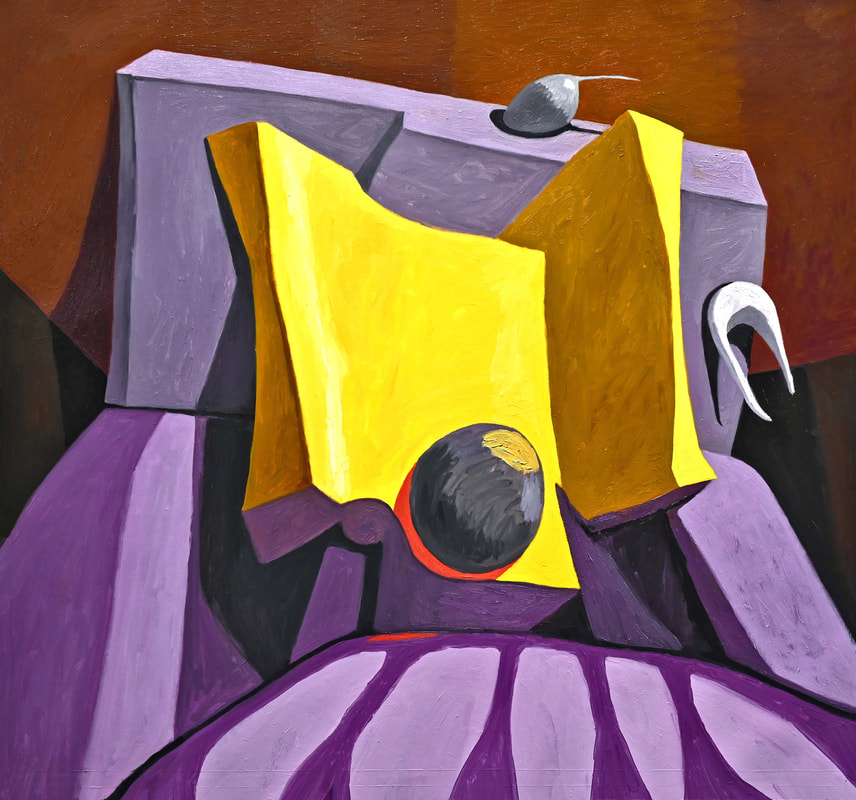 "The Opposite of Indifference" (2021 No.4, state 14), oil on canvas, 54x51 inches, {"The opposite of love is not hate, it's indifference. The opposite of art is not ugliness, it's indifference. The opposite of faith is not heresy, it's indifference. And the opposite of life is not death, it's indifference. Because of indifference one dies before one actually dies. To be in the window and watch people being sent to concentration camps or being attacked in the street and do nothing, that's being dead. His or her neighbor are of no consequence. Their hidden or visible anguish is of no interest. Indifference reduces the Other to an Abstraction." - Elie Wiesel, "US News & World Report" (27 October 1986)} The end of a painting occurs when the creative experience is satiated. Any further participation is a waste on creativity. Such is the position of the painting, "The Opposite of Indifference" (2021 No.4). I move on. Thus came yesterday's drawing. Experimentation in pursuit of a higher degree of immediate self-expression is in this drawing. I have many steps to take before satisfying my journey. Actually, satisfying a life's journey looks to be impossible, from my perspective.
BTW: That form that twists to the right, out from behind the rectangular pole, should have ended in a similar form, but one much larger. That would have made it a better drawing. Perhaps I will change that tomorrow. The lines at the bottom of today's drawing used a solution from my most important teacher, Philip Guston. Here I exhibit Guston's continual influence on me. I accept Guston's discovery of impactful compositional solutions. It is not just an idea espoused by Guston; Guston is in the good company of Pablo Picasso, Mark Rothko, and me. It is the in-your-face solution: this is a great means to capture and involve the viewer. Intention is the beginning and the end. All is lost without intention. It is the mind's eye resting on total recall and total self-knowledge. Self-knowledge is continuously altered. With every confirmation of knowledge comes change. Every experiential activity informs self-knowledge. Such are the steps we take along our true path. Where we are going we do not know.
Yesterday's drawing was a grand experiment in self-knowledge. It is a satisfying step. I know more today because I made this drawing; it is good. I feel satiated by this step. Will I rest, satisfied as I am? No. Satisfaction feeds desire for more satisfaction. I want more. I want more truth. I crave the next step. Do images require a primary form. Is there misdirection without a primary form. Yesterday I read an article in the New Yorker, "My Struggle with Cézanne," written by the art critic Peter Schjeldahl. It is the following two paragraphs that spoke loudly to me:
"It’s a return to roots for MOMA, which initiated its narrative of modern painting in 1929 with a show that included van Gogh, Seurat, and Gauguin as well as Cézanne, whose broken forms made the others look comparatively conservative as composers of pictures. He stood out then, as he does now, for an asperity of expression that is analytical in form and indifferent to style. The appearance of his works is an effect, not a fulfillment. He revolutionized visual art, changing a practice of rendering illusions to one of aggregating marks that cohere in the mind rather than in the eye of a viewer. You don’t look at a Cézanne, some ravishing late works excepted. You study it, registering how it’s done—in the drawings, with tangles of line and, often, patches of watercolor. Each detail conveys the artist’s direct gaze at a subject but is rarely at pains to serve an integrated composition. Cézanne was savagely sincere in his ways of looking, true to what he called his “little sensation” in how things, bit by bit, met his regard. He made pictorial vision the exercise of an artist’s concerted will and a challenge to a viewer’s understanding." Recently I have this fear, a fear that my complex vision, the manner in which I make art, is broken into minute qualities and quantities of form, all searching for a coherent composition. With my "tangles of line," and "little sensation" after "little sensation," I find a composition. I fear I have a propensity to work like Cézanne, who Peter Schjeldahl says, was "rarely at pains to serve an integrated composition." Now I am at pains to serve an integrated composition. My recent idea is to identify a central form, or central thematic area, in each of my works. Yesterday's drawing is such work. The force of my will made this one. It is apropos of my need to grab your attention, grab my attention. I center you, I center me, by using strong vertical forms. Somehow, when I was finished with this drawing, I was reminded of Picasso's "Crucifixion" from 1930. I believe it to be one of Picasso's most remarkable works, different as it is in color, space, and forms from anything else Picasso. Yes, in this crucifixion there is relationships to everything Picasso had done, and would do, but Picasso's approach here is quite different. The viewer is centered by the light-valued blue of the Christ figure and his distraught mother. After this centering, the viewer can wander, be continuously surprised by the complete animation, the literal references, within the composition, one after the next. My drawing is simpler, yet equally haunting. This bring me to the question of background. There is blank paper in my drawing. Does that work? I usually like to touch every surface. I usually feel the need to identify every part of my paper's surface as part of my space, my time, and my composition. That did not happen in this drawing's background. Does it work? There is a bold, forceful grab here: the viewer is captured by strong, vertical forms, I do believe the white paper ground serves its contrasting purpose. I see the white as definitive space; it is the flat plane in front of which the rest of the composition resides. Notice how Picasso dealt with his background and the negative space; four flat colored areas: blue, yellow, orange, red. Is the viewer bothered by these unidentifiable spaces? No! Instead the multiple compositionally positive forms grab and install the viewer within the composition. The forms are strong enough to support the vague spaces and surfaces Picasso's flat colors depict. 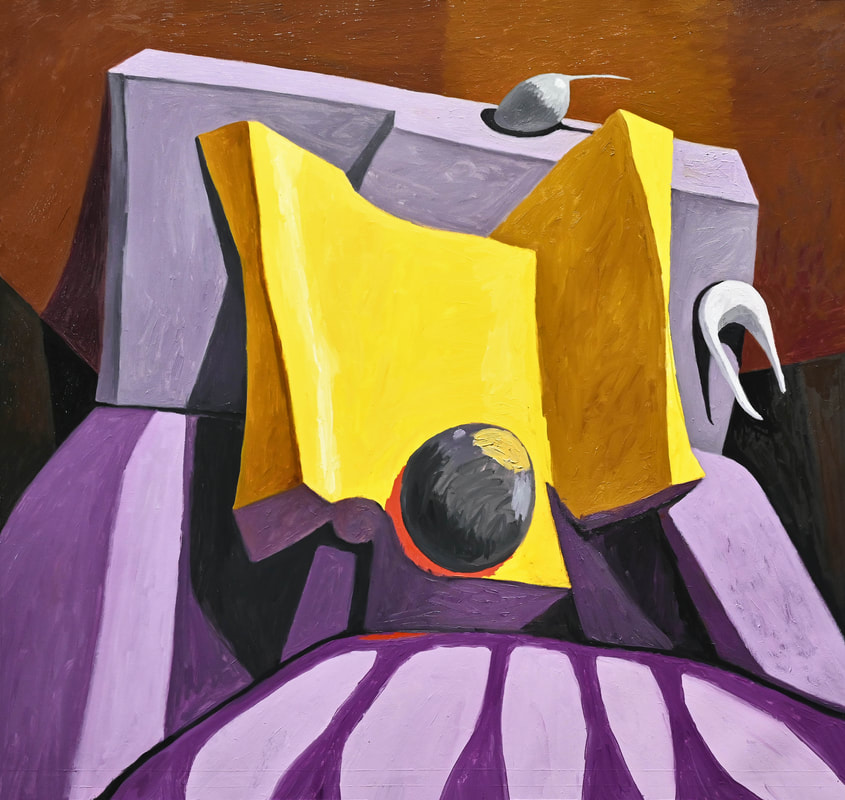 "The Opposite of Indifference" (2021 No.4, state 13), oil on canvas, 54x51 inches, {"The opposite of love is not hate, it's indifference. The opposite of art is not ugliness, it's indifference. The opposite of faith is not heresy, it's indifference. And the opposite of life is not death, it's indifference. Because of indifference one dies before one actually dies. To be in the window and watch people being sent to concentration camps or being attacked in the street and do nothing, that's being dead. His or her neighbor are of no consequence. Their hidden or visible anguish is of no interest. Indifference reduces the Other to an Abstraction." - Elie Wiesel, "US News & World Report" (27 October 1986)} The background of the painting, "The Opposite of Indifference", reminds me of an old master painting, such as Rembrandt's "Self-Portrait" of 1665 (below). My browns and yellows come from Cadmium Yellow and Manganese Violet. Did Rembrandt do the same? I do know. My painting called for a touch of pure red, just as Rembrandt's did! My War, my seeking Peace, is strongly upon me. I am at War because of my desire to force myself (also, my viewers), into spotlight, concentration, and focus. This is me seeking Peace; I have been calling this centering. It is much more sophisticated than than simple centering. In both of today's works I compositionally grapple with this idea of forcing myself (and my viewers) to center into my work of art. Rembrandt did this well. Rembrandt's invention of semi-circles in his "Self-Portrait" moves the viewer off center into the spotlight of his face. Abstraction was Rembrandt's great gift; he always used it to control the composition, forcing the viewer into absorption, and involvement. Rembrandt captured us, his viewers, with abstract brushstrokes, light, color, shapes, and forms. I love Rembrandt's "Self-Portrait"of 1665 because you can see his complete mastery; Rembrandt grabs, captures his viewer through abstracted qualities available in the arsenal of a painter's tools. Yes, Rembrandt experienced War too; he too sought Peace through his art. For the artist, this War seeking Peace is the endless. It is the game we play. 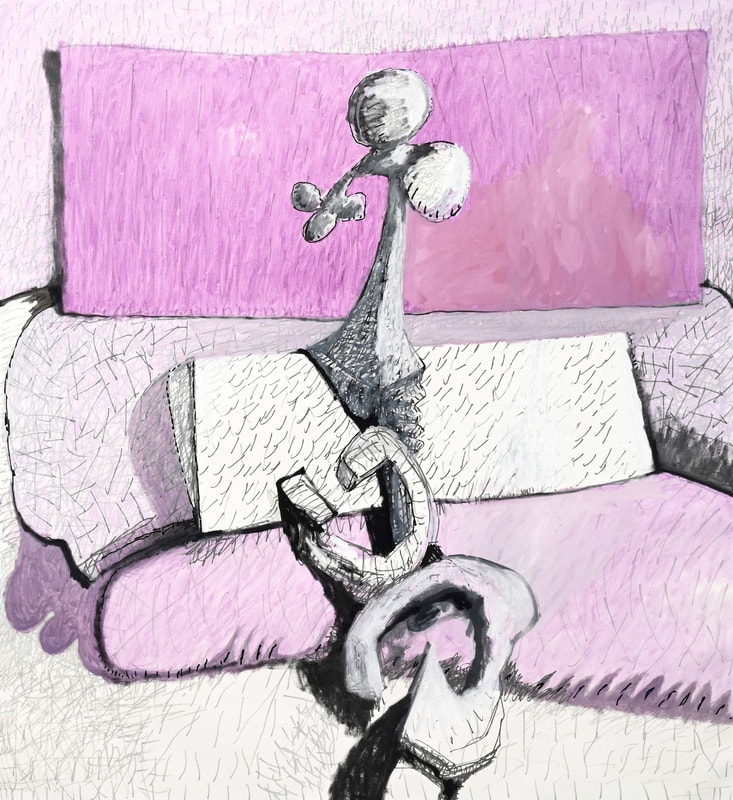 "Gonna Speak to the Crowd" (2021 No.5, state 4), oil on canvas, 62¾x57⅜ inches, {"I'm gonna spare the defeated — I'm gonna speak to the crowd. I'm gonna spare the defeated, boys, I'm going to speak to the crowd. I am goin' to teach peace to the conquered. I'm gonna tame the proud." - Bob Dylan, "Lonesome Day Blues" (2001)} 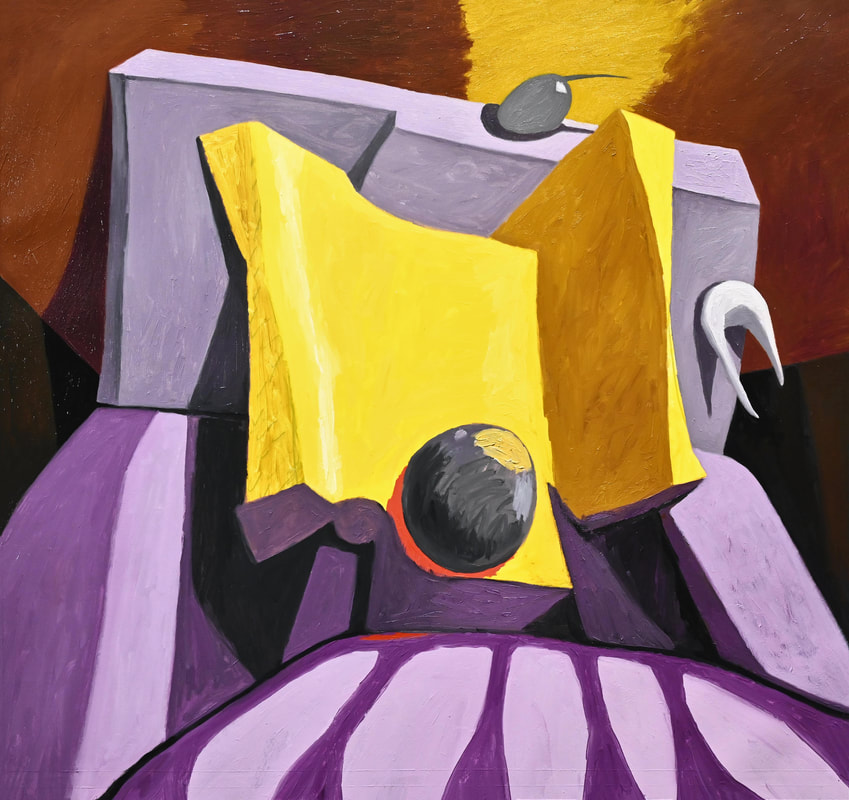 "The Opposite of Indifference" (2021 No.4, state 12), oil on canvas, 54x51 inches, {"The opposite of love is not hate, it's indifference. The opposite of art is not ugliness, it's indifference. The opposite of faith is not heresy, it's indifference. And the opposite of life is not death, it's indifference. Because of indifference one dies before one actually dies. To be in the window and watch people being sent to concentration camps or being attacked in the street and do nothing, that's being dead. His or her neighbor are of no consequence. Their hidden or visible anguish is of no interest. Indifference reduces the Other to an Abstraction." - Elie Wiesel, "US News & World Report" (27 October 1986)} The viewer will be engaged if the image forces the viewer's vision to be centered. This does not necessarily mean the main form of the image is in the center of the image. Obvious? Yes! Take a look at Modigliani's "Boy in the Blue Shirt"! Then take a look at the three images I show today. 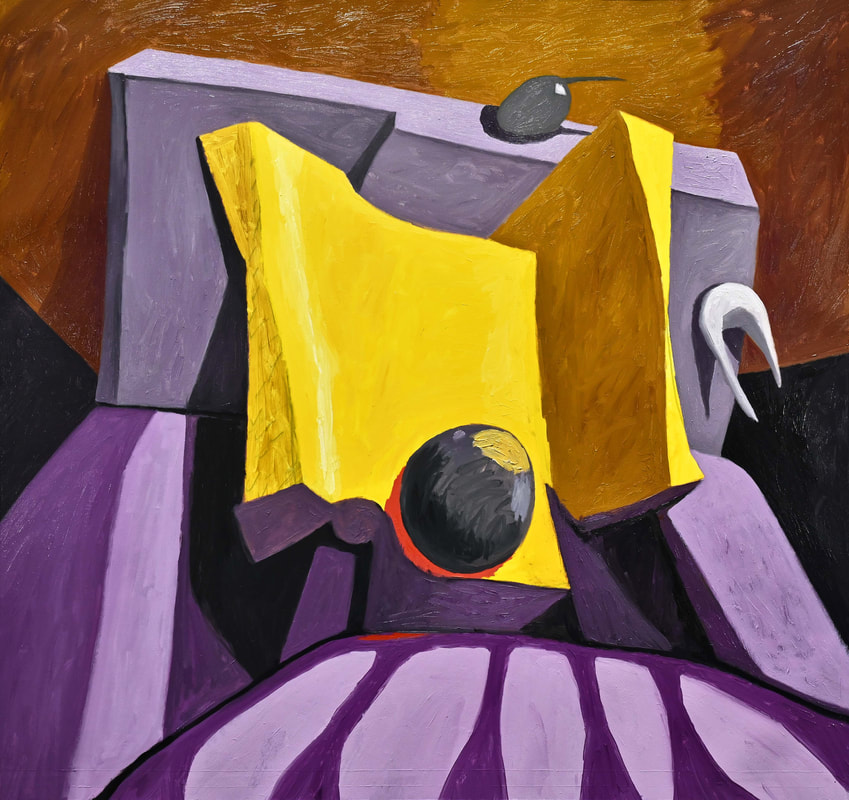 "The Opposite of Indifference" (2021 No.4, state 11), oil on canvas, 54x51 inches, {"The opposite of love is not hate, it's indifference. The opposite of art is not ugliness, it's indifference. The opposite of faith is not heresy, it's indifference. And the opposite of life is not death, it's indifference. Because of indifference one dies before one actually dies. To be in the window and watch people being sent to concentration camps or being attacked in the street and do nothing, that's being dead. His or her neighbor are of no consequence. Their hidden or visible anguish is of no interest. Indifference reduces the Other to an Abstraction." - Elie Wiesel, "US News & World Report" (27 October 1986)} I am, as always, fascinated by reality. I am fascinated by the reality that a picture requires an obvious sign-like center to be heeded. Compositions with a core center insist upon being viewed. Compositions with an obvious center of attention insist upon being taken seriously. Seriously! I don't have to tell you. You have been drawn into the images I show you today, including a painting by Jean-Michel Basquiat. My painting, "The Opposite of Indifference", does need more work to fully smack your eyes into a center of attention. That will happen today. 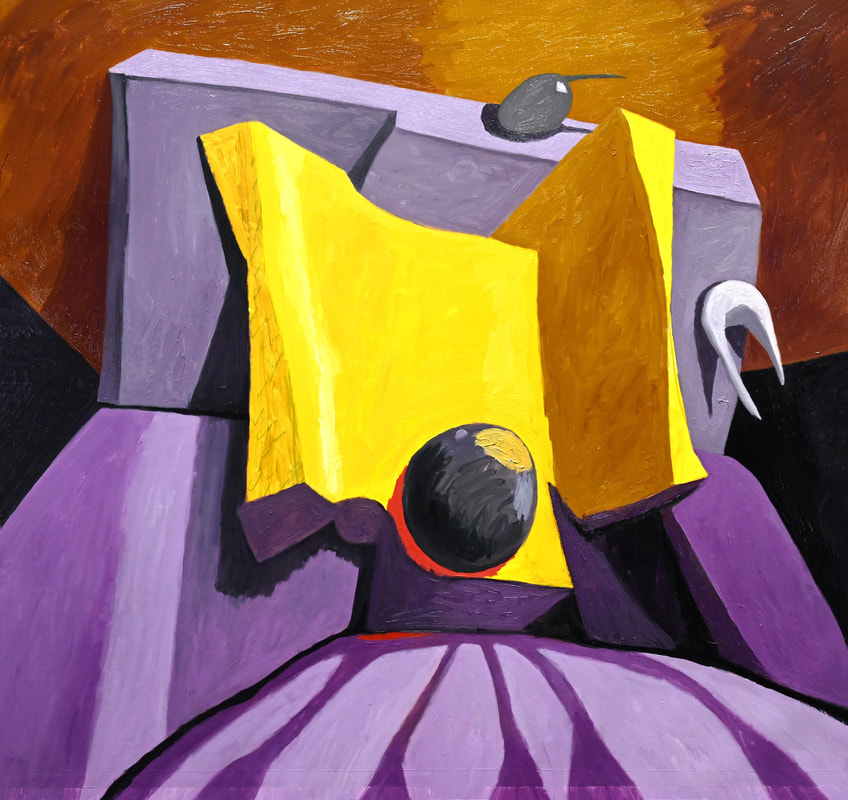 "The Opposite of Indifference" (2021 No.4, state 10), oil on canvas, 54x51 inches, {"The opposite of love is not hate, it's indifference. The opposite of art is not ugliness, it's indifference. The opposite of faith is not heresy, it's indifference. And the opposite of life is not death, it's indifference. Because of indifference one dies before one actually dies. To be in the window and watch people being sent to concentration camps or being attacked in the street and do nothing, that's being dead. His or her neighbor are of no consequence. Their hidden or visible anguish is of no interest. Indifference reduces the Other to an Abstraction." - Elie Wiesel, "US News & World Report" (27 October 1986)} Here I exhibit two works, two steps as I acknowledge centering a composition is necessary to demand viewer attention. The drawing uses negative space more fully than positive space. Is it fully successful? Does it capture your attention? You be the judge. I call it an ardent step in the right direction!
|
To read my profile go to MEHRBACH.com.
At MEHRBACH.com you may view many of my paintings and drawings, past and present, and see details about my life and work. Archives
July 2024
|
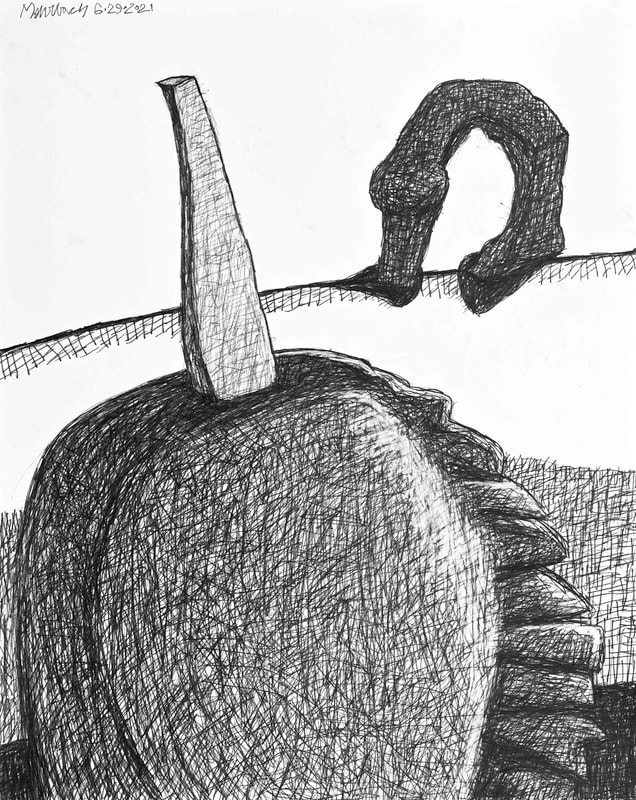
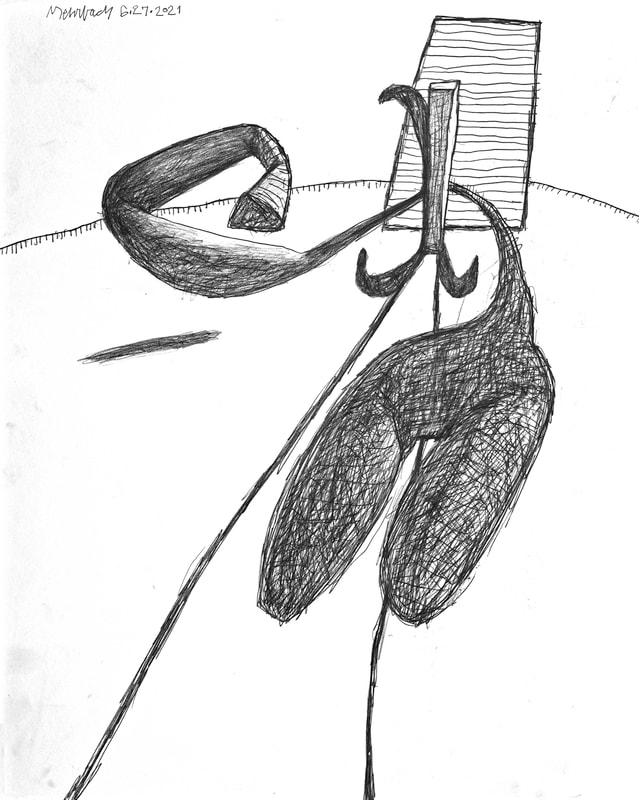
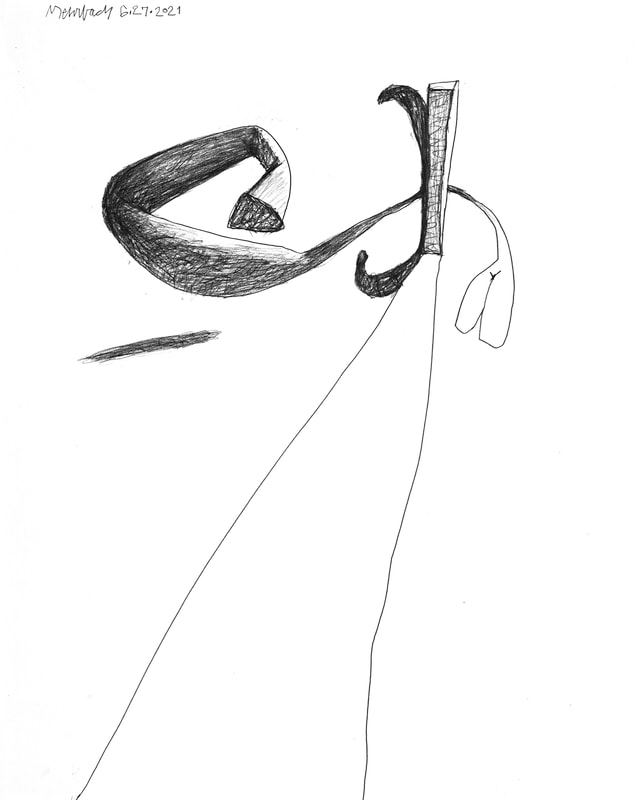
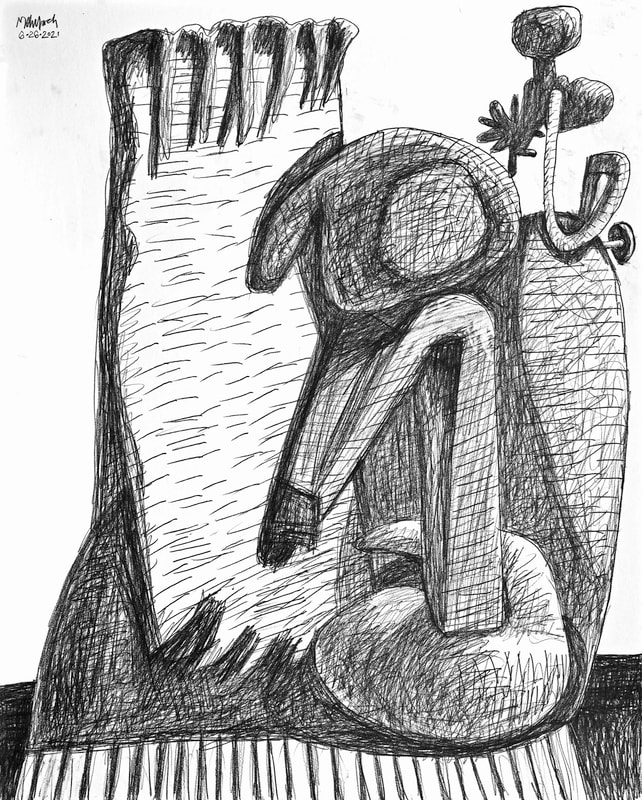
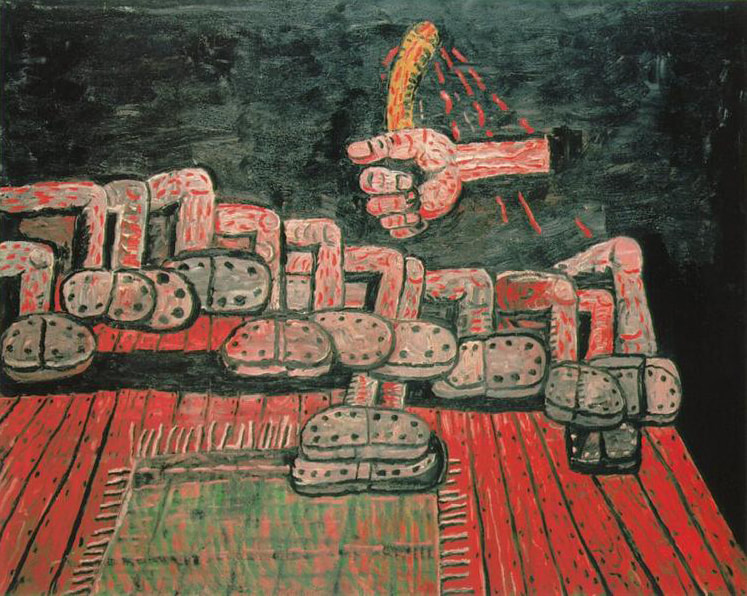
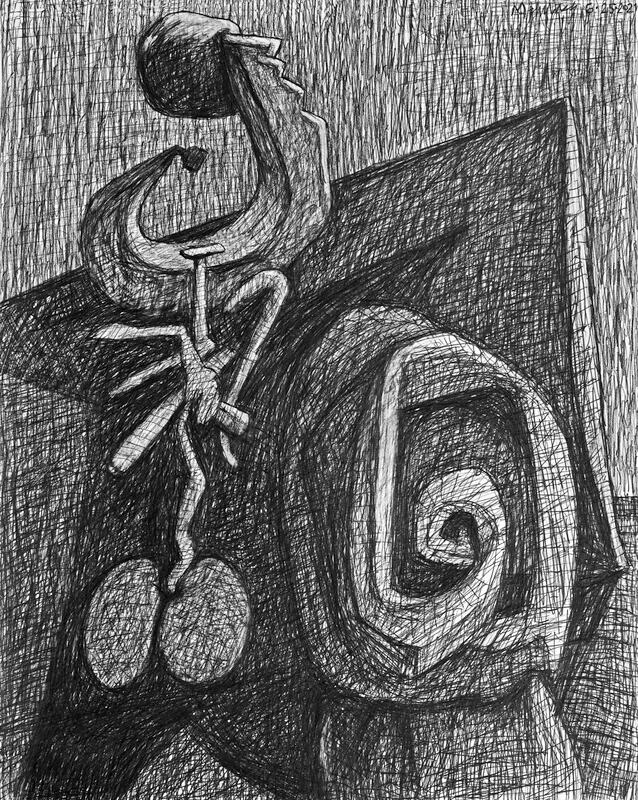
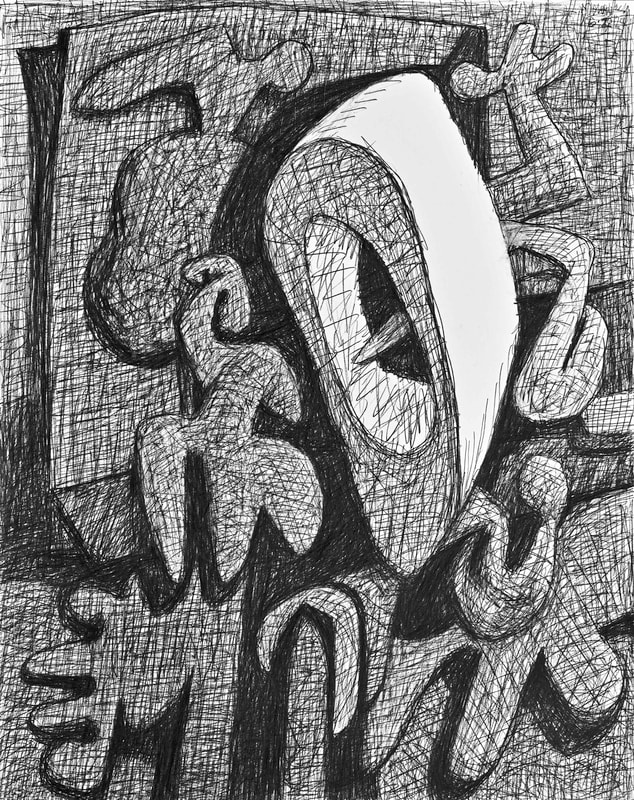
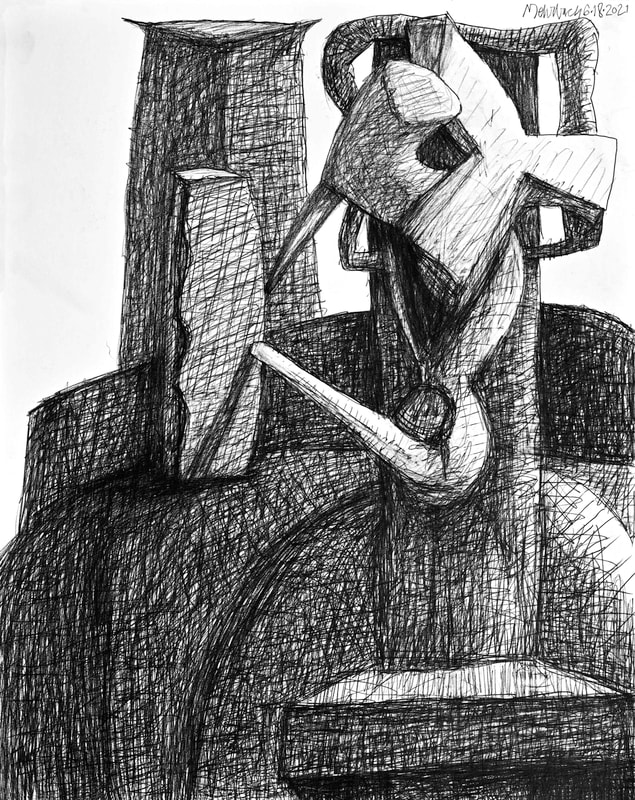
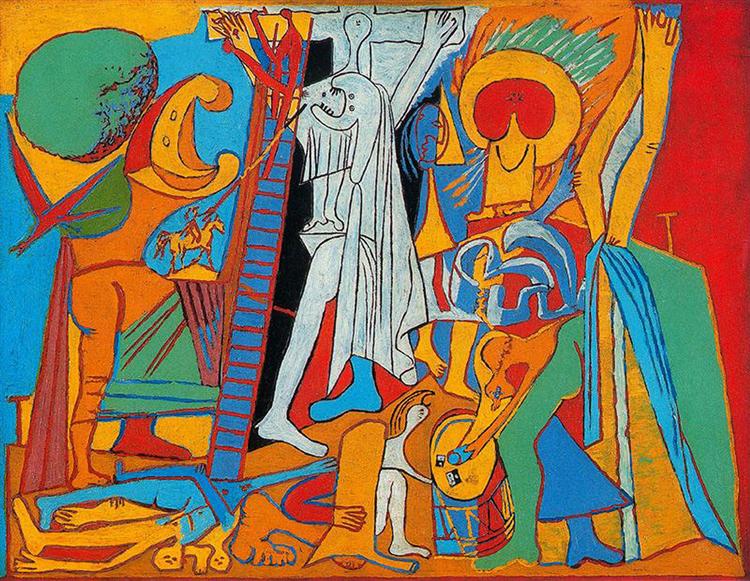
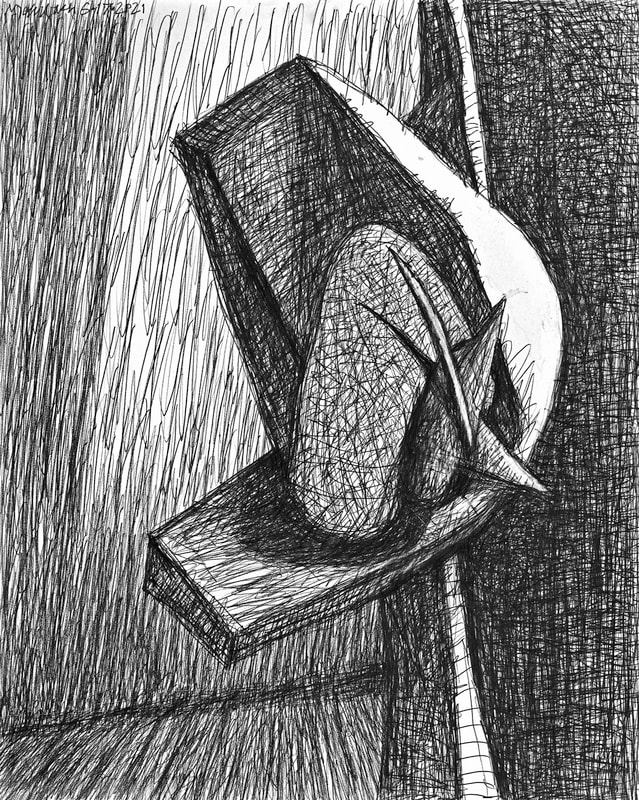
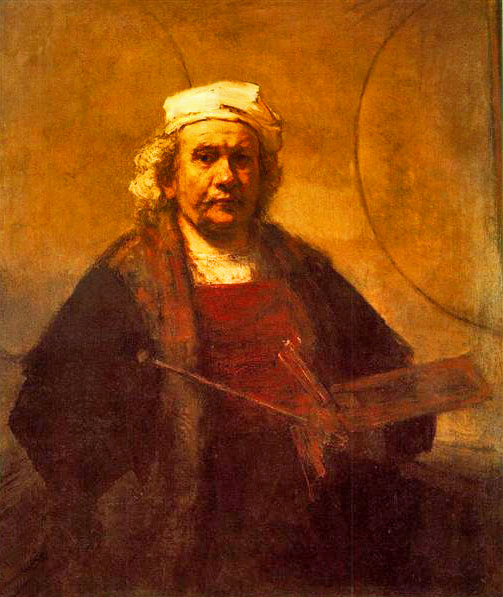
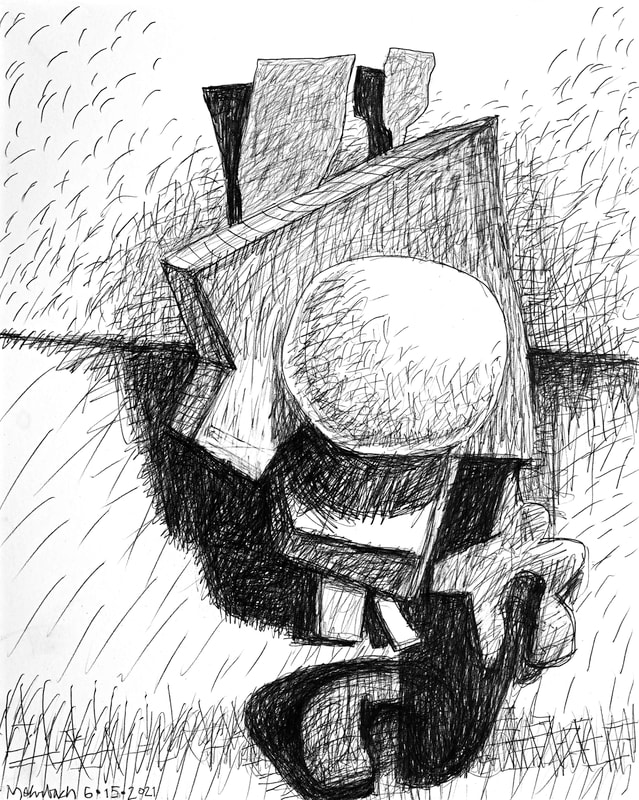
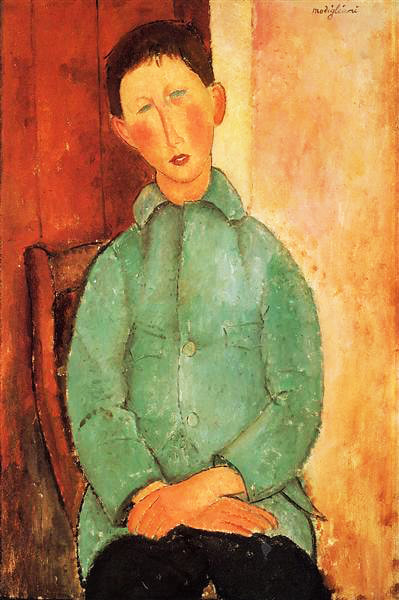
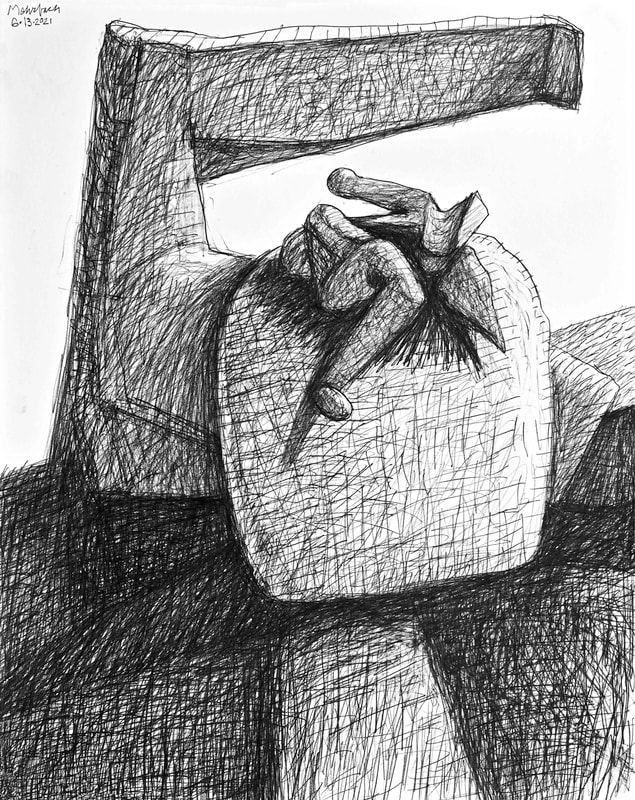
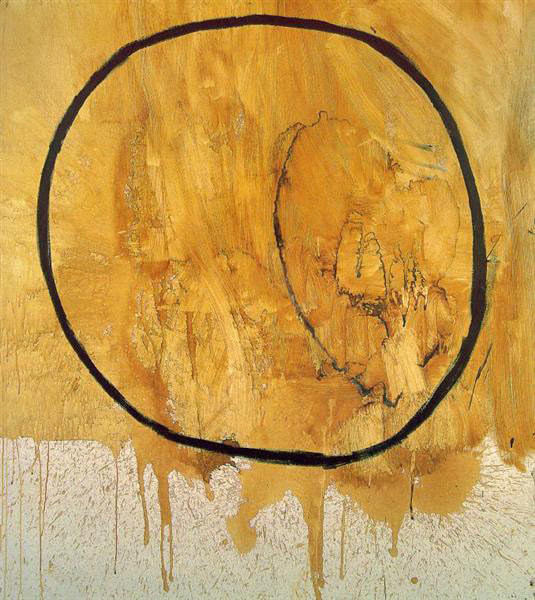
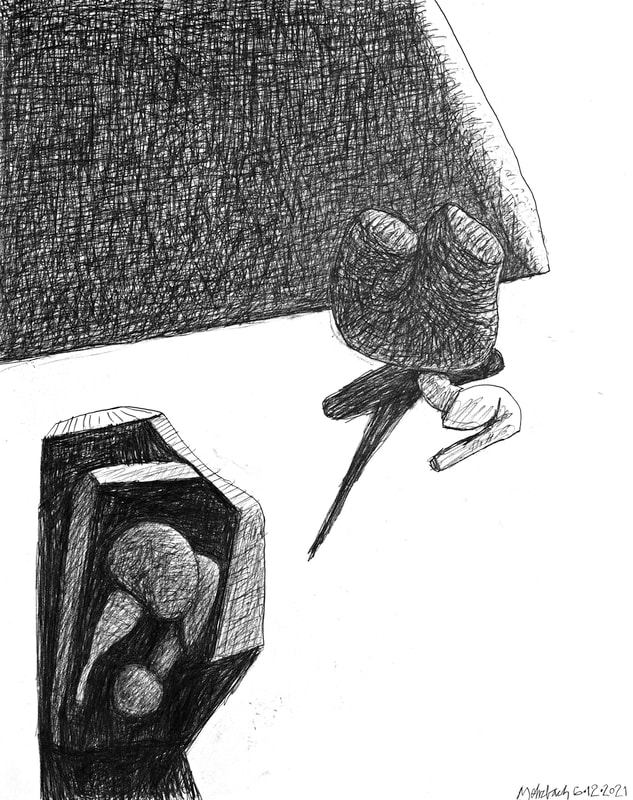
 RSS Feed
RSS Feed